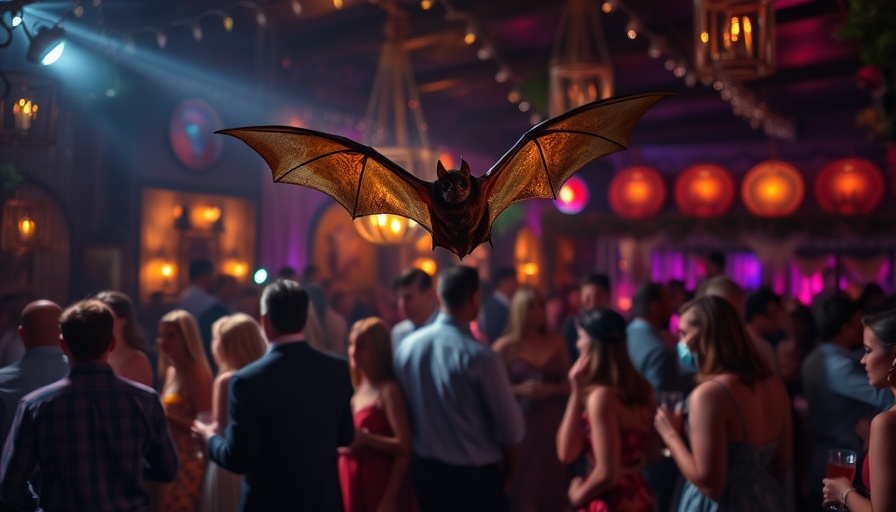
Unraveling the Mystery of Bat Echolocation in High Densities
Bats, those nocturnal creatures that play a critical role in our ecosystems, have long fascinated scientists, especially regarding their unique ability to navigate and forage in the dark. A recent study by researchers from Tel Aviv University and the Max Planck Institute of Animal Behavior has shed light on how these mammals tackle the challenges associated with flying in massive numbers—creating what is often referred to as a 'cocktail party nightmare' of overlapping echolocations.
The Remarkable Precision of Echolocation
Echolocation, a sophisticated biological sonar, allows bats to emit sound waves and interpret the echoes that bounce back to them. This ability is critical for navigation and hunting, particularly in crowded environments. The researchers observed that when bats emerge from their roosts, they would deliberately adjust their echolocation calls—essentially tuning into a different frequency to mitigate potential acoustic 'jamming' caused by their kin. This adjustment significantly reduces the likelihood of collisions, a phenomenon that raises questions about how social animals maintain safety in such high-density situations.
The Cocktail Party Phenomenon Explained
The 'cocktail party effect,' a term coined to describe how individuals can focus on specific voices in noisy environments, also applies to bats. The study reveals that these flying mammals adjust their distance from each other upon takeoff, effectively strategizing their movement and sound production. As they emerge in large groups, bats naturally try to occupy different spatial positions, which helps them navigate through the thick of their colony without falling victim to aerial mishaps, which are surprisingly rare.
Why This Research Matters Beyond Bats
The findings not only enhance our understanding of bat behavior and their ecological adaptations but also have broader implications for technological advancements in fields such as robotics and artificial intelligence. Engineers and designers are constantly seeking inspiration from nature to solve complex problems. The principles learned from bat echolocation could inform the development of more efficient navigation systems for drones and autonomous vehicles, promoting safer technology even in crowded environments.
Drawing Parallels in Urban Life: The 'Cocktail Party' in Dallas
Interestingly, consider how these insights could metaphorically translate to urban life, especially in vibrant cities like Dallas. Just as bats efficiently navigate a crowded night sky, residents in metropolitan areas manage their social interactions amid the bustling environment. Understanding how to 'tune out the noise' can lead to better communication strategies and relationship-building in our everyday lives.
Future Predictions and Insights on Bat Research and Technology
The ongoing research into bat echolocation is poised to inspire even more discoveries as scientists delve deeper into the complexities of animal communication and behavior. As we enhance our technological concepts with insights from wildlife, we may see future innovations that echo these natural solutions, improving the urban experience in cities like Dallas.
How You Can Engage with Nature's Innovations
Engaging with local wildlife can lead to greater appreciation for these fascinating creatures. Dallas residents can explore local parks for bat watching opportunities or support wildlife conservation efforts aimed at preserving bat populations. Additionally, embracing these insights can enhance urban living—from recognizing the importance of social cues in a crowded space to understanding the balance of technology and nature in our communities.
Grasping these elements of life's delicate balance is key not only to how we navigate our environment but also to understanding the importance of innovation driven by nature. Discover more about local events and resources that connect you with Dallas wildlife and support ongoing research.
 Add Element
Add Element  Add Row
Add Row 



Write A Comment